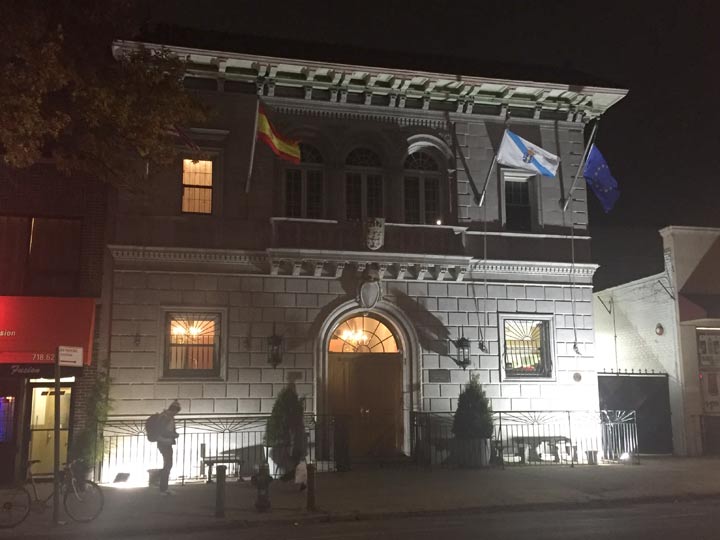The ethnic group Astoria has been traditionally known for is that of Greek immigrants, but there are also pockets from other European countries such as Spain. One gathering point for Spanish immigrants and their descendants is Casa Galicia, 31st Avenue between 37th and 38th Streets.
The spanish province of Galicia is among the westernmost in mainland Europe, located just below the western brim of Spain’s upside-down “hat” north of Portugal. It was originally occupied by Celtic people and then became part of the Roman Empire and was later dominated by the Visigoths and then the Islamic caliphs before Christian rule was restored. Though it is now part of Spain, its people have a distinct culture featuring renowned works of art and architecture, and to the present day Galicia is self-governed. Galician is a separate language closer to Portuguese than Spanish; both Castilian Spanish and Portuguese are commonly spoken.
In New York, Casa Galicia was founded in 1940 and moved into its present Astoria building in 1994. The building had formerly been a Ukrainian church, which is ironic because Galicia is also the name of an eastern European province bordering on Poland and Ukraine. Spanish and Galician flags flutter outside the wedding cake-like 31st Avenue building.
At Casa Galicia the province’s culture including traditional dances as well as cuisine are promulgated. The busiest time of year is El Carneval in the spring. The club has over 1000 members and is not the only Spanish club in Astoria: a second, Centro Español, has over 300.
Check out the ForgottenBook, take a look at the gift shop, and as always, “comment…as you see fit.”
1/23/20


11 comments
Galicia contains the city of Santiago de Compostela, the burial place of St. James (Iago), and destination of religious pilgrims for the last 1000 years. The Camino de Santiago begins at the French border and runs westward 500 miles across northern Spain into Galicia.
My family’s roots are in the “other” Galicia. I had always known of the Spanish Galicia but never any connection between the two. This building, and its similar culture, seems to establish a somewhat
tenuous relation between the two. Thanks.
The circa 1940 tax phot shows the location as a restaurant/bar/dancehall named Castle Hall.
Castle Hall circa 1940
Going *way* back, people in Galicia spoke an actual Celtic language related to Gaelic, but it vanished over a thousand years ago.
I pass it often and wondered about it. Any pictures of the interior?
Nope, Galician is widely spoken all over Galicia and is one of the main subjects in schools. It is a beautiful language and as you say, of Celtic roots.
My wife is a member there. My children perform in their ethnic band which feAtures bagpipes. If you go with a member, it has a full restaurant inside
My Dad and all his siblings born in Carballino, Orense
ALL I believe are original members of Casa Galicia, I believe I need 2 supporters to join them.
Galicia, which covered part of northern Portugal, Asturias and Leon, was the first historically-recognized kingdom in Europe!!
I love to see this. You’re all welcome in Santiago de Compostela¡¡¡
1969 conoci mi esposa , con musica tropical. en 3 horas , fue la decision de esperar que me diera el si . hoy 2023 todavia seguimos .juntos . memorias son memorias